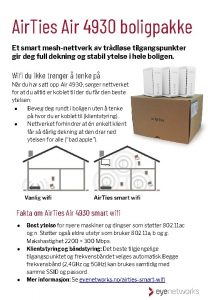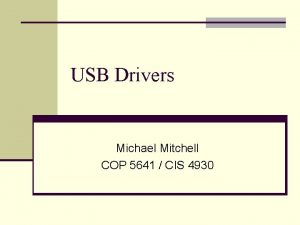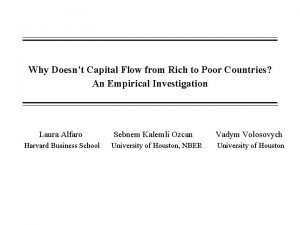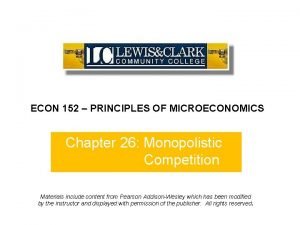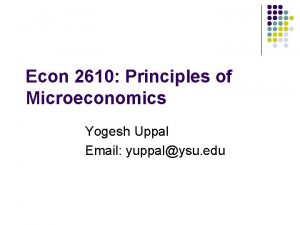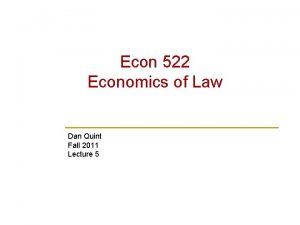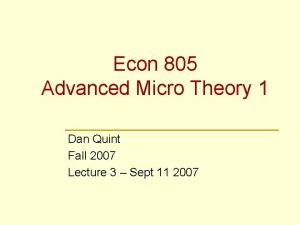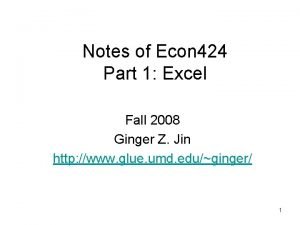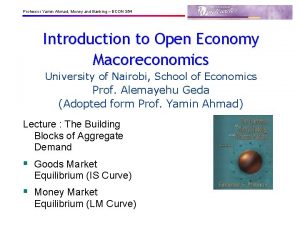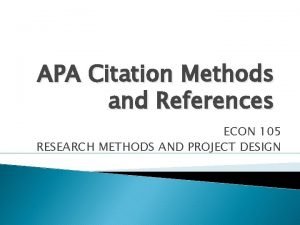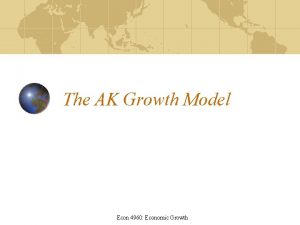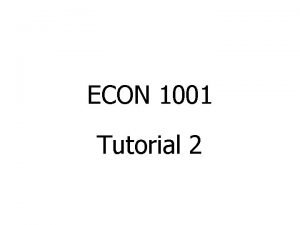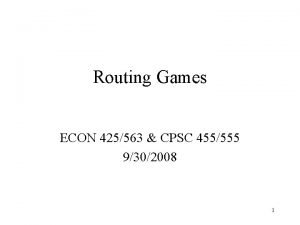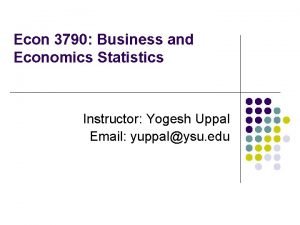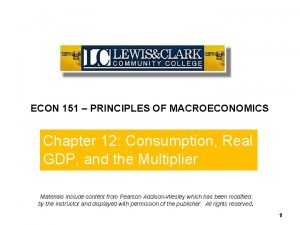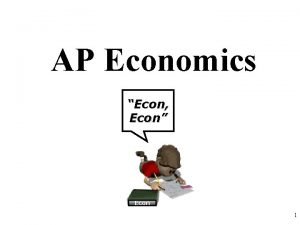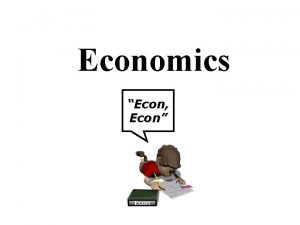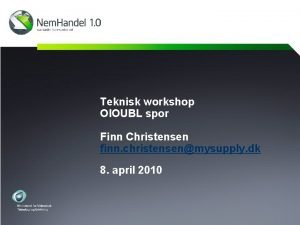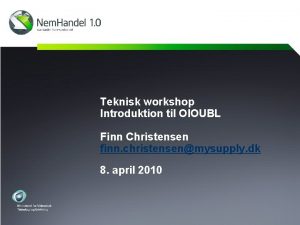ECON 4930 Term paper Finn R Frsund Term


















- Slides: 18

ECON 4930 Term paper Finn R. Førsund Term paper 2007 1

1 a. Define the situation of overflow of the reservoir n The water accumulation equation n Strict inequality means that the amount of water at the end of period t is less than the sum of what was received from period t-1 plus inflow during period t subtracted the release during period t → overflow Overflow implies that , the reservoir capacity n Term paper 2007 2

1 b. What is the unit of measurement of the fabrication coefficient a? Explain the calibration of the coefficient n Unit for a: n Calibration: q q The height of the fall from the reservoir to the turbine, called head. Gravity gives the energy of water The efficiency losses due to friction in pipes, turbine not perfect, totalling 10 -15% loss Term paper 2007 3

1 c. Converting variables measured in water to variables measured in k. Wh n Inserting the production function into the water accumulation equation: Term paper 2007 4

2. The social planning problem Term paper 2007 5

2 a. Discuss the objective function for the planning problem n The objective function is the area under the inverse demand curve (NB! Choke price finite) q q Demand function can be linked to utility function The model is partial because there are no links to other activities, goods, etc. in the economy A typical general objective function is the consumer plus producer surplus. Because variable production costs are zero we are left with the area under the demand curve. Discounting is neglected due to short total time period Term paper 2007 6

2 b. Why is the planning problem formulated as a dynamic problem? n Having a reservoir means that water used today can alternatively be used tomorrow, water has an opportunity cost Term paper 2007 7

2 c. Discuss reasons for a constraint on production to be realistic n Production measured in k. Wh can have an upper limit for a period due to technical reasons q q q The flow of water through the pipe hitting the turbines is constrained by the diameter The conversion to electricity is constrained by installed turbine capacity The production of electricity may be constrained by the size of the generator Term paper 2007 8

2 d. Kuhn – Tucker conditions n The Lagrangian function Term paper 2007 9

2 d. , cont. n The Kuhn – Tucker conditions Term paper 2007 10

2 d. , cont. n Interpretation of shadow prices: q q Change in the optimised objective function of a marginal change in the constraint, found by partial differentiation of the optimised Lagrangian Shadow price on the water accumulation constraint n Change in the objective function of a marginal change in the constraint (i. e. , change in Rt-1, wt) Term paper 2007 11

2 d. , cont. q Shadow price on the reservoir capacity constraint q Shadow price on the production constraint Term paper 2007 12

2 e. Circumstances that may lead to a binding constraint for production. Concept of locking in of water and manoeuvrability of the reservoir n Constraining production q q n Locking in of water q n Satisfying consumption in a high-demand period Producing in order to prevent overflow Impossible to prevent overflow physically Manoeuvrability q The rate of maximal production relative to reservoir size Term paper 2007 13

2 f. Kuhn – Tucker conditions for period T n Realistic assumptions n No satiation of demand: price positive Binding production constraint in period T n q Not realistic unless T is a high-demand period, prevention of overflow is not realistic in the last period Term paper 2007 14

2 g. A bathtub diagram illustration p. T-1 Period T-1 p. T Period T λT-1 A λT B M C D Total available water Term paper 2007 15

2 h. Events that may lead to social price and shadow price changes n Threat of overflow t n Emptying the reservoir t n Binding production constraint t Term paper 2007 16

2 i. Shadow prices on stored water for period u+2, u+1 and u n n Production constraint binding for period u+1, but not for period u, and u+2 to T Reservoir in between full and empty from T-1 to u Term paper 2007 17

2 i. Illustration: two-period bathtub diagram for periods u and u+1 pu Period u Pu+1 Period u+1 Pu+1=λu+1+ρu+1 p. T=λu+1 pu=λu=p. T A B B’’ Term paper 2007 C D 18
